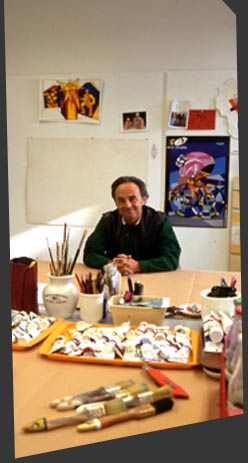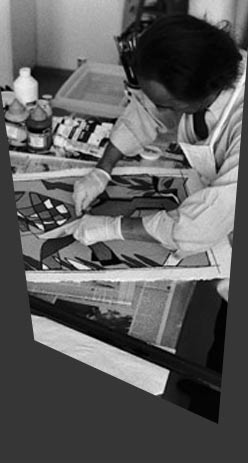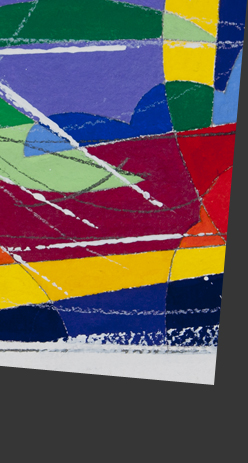Ugo Nespolo has always had a far more than casual interest in film. Indeed, the regularity with which he has turned to the film medium in order to express his creativity over the years has gradually enabled him to achieve an authentic professional expertise. Yet all his films â from his first experimental ‘artistic’ works to his latest, more technically sophisticated productions - are pervaded by a coherent, logical discourse, a fil conducteur which often takes the form of real and proper narration. Indeed, whether documenting the artistic output of his friends or calling real actors to perform before the camera, he always places his images within a story, an intellectual fiction in which forms and objects move on an invisible stage and the figures which populate his paintings are caught up in an increasingly incandescent play of mirrors.
There is thus a certain relationship between his paintings and his films, even if there are no real physical similarities: both media are used in such a way as to generate a mental collage, an intellectual mosaic, a landscape of ideas and sensations which need more space in order to come to the surface. [â¦]
Over time, Ugo Nespolo has become increasingly aware of the possibilities offered by the film medium, and especially of the chance to pursue a kind of fleeting, multiform investigation via the moving image. It is no chance that Nespolo’s images move before our eyes like tipsy ballerinas or ironic ghosts. [â¦]
All Nespolo’s works are pervaded by two main elements, the first being the body and the second being the concept of desire.
The body is a characteristic and significant feature of Nespolo’s entire oeuvre (regardless of the medium of expression adopted) and all his films - be they narrative or documentary, ironic or erotic, bizarre or grotesque, allusive or illusive, affected by a touch of madness or sources of the odd spiritual shiver - in some way refer to the nature or material substance of the body [â¦]. Â
The other fundamental feature of all his films is the way in which they are pervaded by an incessant, insatiable search for desire, a sensation which is obviously extremely closely connected to the instinctive reactions of the body. Desire is a concept which pervades all Nespolo’s works, sometimes even culminating in a wish for death (another leitmotif which is embraced in even his most ironic and rowdy films) and, indeed, many of his films conclude with a disappearance, a distancing, a move or even a real and proper killing. Thus the body which constantly pursues desire never actually manages to experience it while, for some strange reason, the aim of desire is to injure or lacerate the body. As a result, even when the two eventually meet, they both remain fatally separate.




